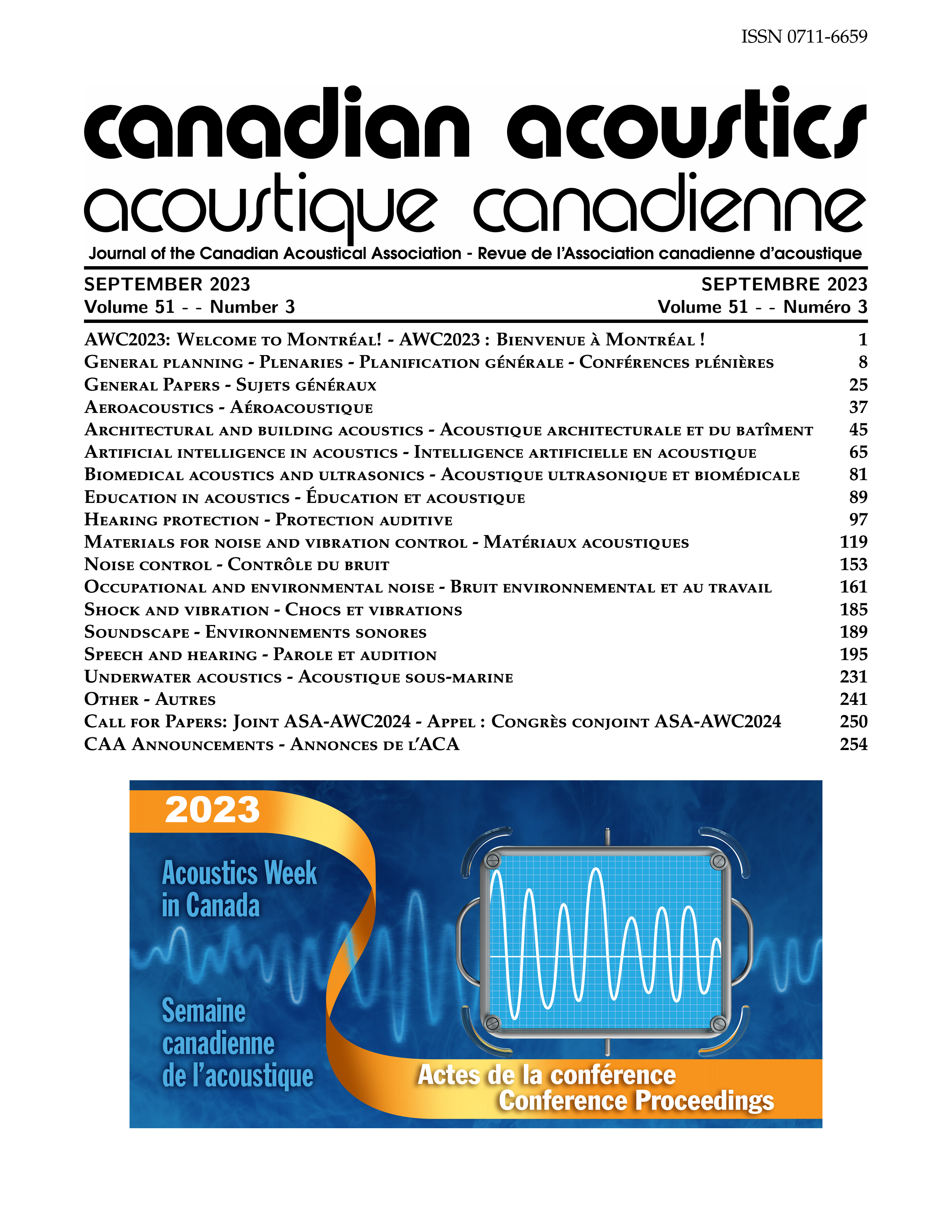CFD Simulations of the Static Airflow Resistivity of a Perforated Solid: Effects of Size and Flow Velocity
Abstract
For acoustic absorbers, the static airflow resistivity is the parameter which has the greatest impact on their acoustic absorption coefficient in the linear amplitude regime. Therefore, its measurement according to ISO 9053 (or ASTM C522) should be conducted with care. This ISO standard gives specifications on the size and mounting of specimens, their location in the measuring cell, minimum and maximum flow velocities, calibration specimens and the measurement procedure. An important requirement is to ensure a stable linear flow so that the resistance is independent of the velocity. Additionally, it specifies the use of a calibration test specimen to ensure proper operation of both hardware and software. The suggested calibration specimen consists of straight cylindrical pores whose value can be calculated theoretically. However, no other specification is given for designing the calibration specimen. Since the airflow resistivity of a perforated low-porosity solid can behave nonlinearly with velocity, it is important to present some additional guidelines for their design. This work presents CFD simulations on the flow resistivity of a cylindrical solid containing a single perforation subjected to an air flow velocity ranging from 0.5 mm/s to 10 cm/s. The simulations replicate a commercial airflow resistivity meter. The results of the simulations are compared with the theoretical formula and the experimental measurements. The results highlight the importance of the size of the perforation (diameter and depth) and the flow velocity to ensure that the measurement aligns to the theoretical value.Additional Files
Published
How to Cite
Issue
Section
License
Author Licensing Addendum
This Licensing Addendum ("Addendum") is entered into between the undersigned Author(s) and Canadian Acoustics journal published by the Canadian Acoustical Association (hereinafter referred to as the "Publisher"). The Author(s) and the Publisher agree as follows:
-
Retained Rights: The Author(s) retain(s) the following rights:
- The right to reproduce, distribute, and publicly display the Work on the Author's personal website or the website of the Author's institution.
- The right to use the Work in the Author's teaching activities and presentations.
- The right to include the Work in a compilation for the Author's personal use, not for sale.
-
Grant of License: The Author(s) grant(s) to the Publisher a worldwide exclusive license to publish, reproduce, distribute, and display the Work in Canadian Acoustics and any other formats and media deemed appropriate by the Publisher.
-
Attribution: The Publisher agrees to include proper attribution to the Author(s) in all publications and reproductions of the Work.
-
No Conflict: This Addendum is intended to be in harmony with, and not in conflict with, the terms and conditions of the original agreement entered into between the Author(s) and the Publisher.
-
Copyright Clause: Copyright on articles is held by the Author(s). The corresponding Author has the right to grant on behalf of all Authors and does grant on behalf of all Authors, a worldwide exclusive license to the Publisher and its licensees in perpetuity, in all forms, formats, and media (whether known now or created in the future), including but not limited to the rights to publish, reproduce, distribute, display, store, translate, create adaptations, reprints, include within collections, and create summaries, extracts, and/or abstracts of the Contribution.


